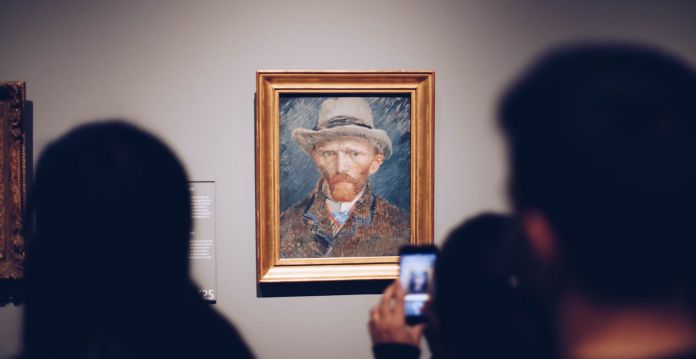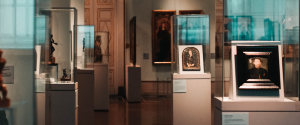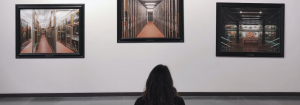Cultural institutions are center points of knowledge, information, and history. They have colossal quantities of information to share and stories to tell. The capabilities of digital signage in museums, libraries, and galleries provides a simple way to present such quantities in digestible and appealing ways. We’ll quickly go over some of the most important benefits and reasons to incorporate digital signage here.
From providing background information about a painting, to collecting feedback at the exit, digital signage truly finds many creative and highly impactful uses to transform the journey of these cultural institutions. Let’s start at the entrance!
Navigation
Museums and libraries, even smaller ones, have a precise way of organizing their works. Keeping that in mind, the concept of navigation and wayfinding doesn’t necessarily refer to finding the right door or hallway. Instead, digital signage in museums can refer to appropriate sections of the exhibit floor, or the way books or exhibition pieces are cataloged or sorted. It becomes particularly important with larger establishments, such as museums, as they sort artifacts in particular thematic ways. Even temporary self-contained exhibitions can be tricky to navigate. An interactive digital display can list the items on display and direct the user to the corresponding exhibit.
Digital signage can serve as a manual on navigating vast collections of information and directing people to, among other things, the respective sections of the establishment. Of course, key areas such as restrooms, exits, or refreshment areas should be highlighted.
Event promotion
The interest of visitors is piqued the most at the end of their tour. As they begin to process what they just saw and consider their next visit, it is more than ideal to use digital signage to cater to that need. As one exhibition approaches its end date, highlight it as well as the ones coming up after it. This also applies to events or activities related to the current one taking place. For instance, if a library ran a promotion of a new publisher or a new book, highlight where visitors can go to keep up with them online or where they may find upcoming dates for readings.
Also be sure to use digital signage to promote membership programs. Consider subscription services, or any special offers you may have, encouraging visitors to support the institution long-term.
Information on-demand
Every book, artifact, or piece of art has a story. Sadly, we can’t display these stories in detail lest they overwhelm visitors with information. Instead, digital signage in museums, libraries, or galleries can provide further reading information on demand, depending on the context you’re looking to provide. If a visitor is interested in the writer of a particular work or the deeper history of an artifact, they can interact with a nearby digital display to read the highlights, background information, origin, or even a link to access additional information online. This is a great way to bring users to your website and interact with them.
Furthermore, consider using digital signage to showcase educational content such as documentaries, interviews, and behind-the-scenes footage related to a particular item or collection. Historical pieces, art, or books connected to famous historical figures are the best examples!
Historical timeline visualization
Another fun piece of information which can be visually presented and brought on-demand is a historical timeline of a particular exhibit piece or collection. Through a short video, either on rotation or triggered, display the history of, say, a piece of equipment that’s hundreds of years old. Historical data becomes more intriguing the older a piece is. You can truly condense hundreds, if not thousands, of years into a beautiful depiction.
Artwork interpretation
Objectively speaking, we can all agree that art is subjective. Yet, there are always interpretations which are most accept and agreed upon. Of course, don’t even attempt to decipher the secret behind Mona Lisa’s smile. What you can do is highlight what the most common speculations are. This can leave room for creative thought, especially with pieces which are unknown to visitors and where they don’t really have a viewpoint.
Through the medium of digital signage, provide a thought-provoking compilation of interpretations giving the viewer some insight. At the very least, give them a starting point to make their own!
Donor recognition
Perhaps not the most exciting content, but recognizing and acknowledging donors, sponsors, and supporters is important. Apart from showing gratefulness for the support, it also fosters a sense of community and respect. Of course, it may incentivize others to support the institution in the future.
Multilingual support
A useful and valuable feature, supporting translations in various languages is important if there is a diverse presence among the visitor body. Include alternate versions for the most common languages spoken by visitors. In case you don’t have everything translated, at the very least you can direct users to appropriate online links where they can find the information they need.
Feedback and surveys
It’s invaluable to receive feedback from visitors in order to enhance and improve the experience for everyone. Incorporate quick interactive surveys and feedback forms near exits for visitors. Ask for a simple rating on their experience. Provide space for them to elaborate on anything they’d like to see more of. Through this, you can quickly find what needs improvement and what might be entirely missing from the visitors’ journey.
In the case of cultural establishments, there is more than enough content to use to create content for digital signage. This is where software such as OnSign TV comes in to give a presentable and appealing shape. Divide your screen into neatly arranged sections, set up interactive campaigns, and schedule content ready to display at the right time. Try out everything OnSign TV has to offer for free!
Cover image by Ståle Grut.







